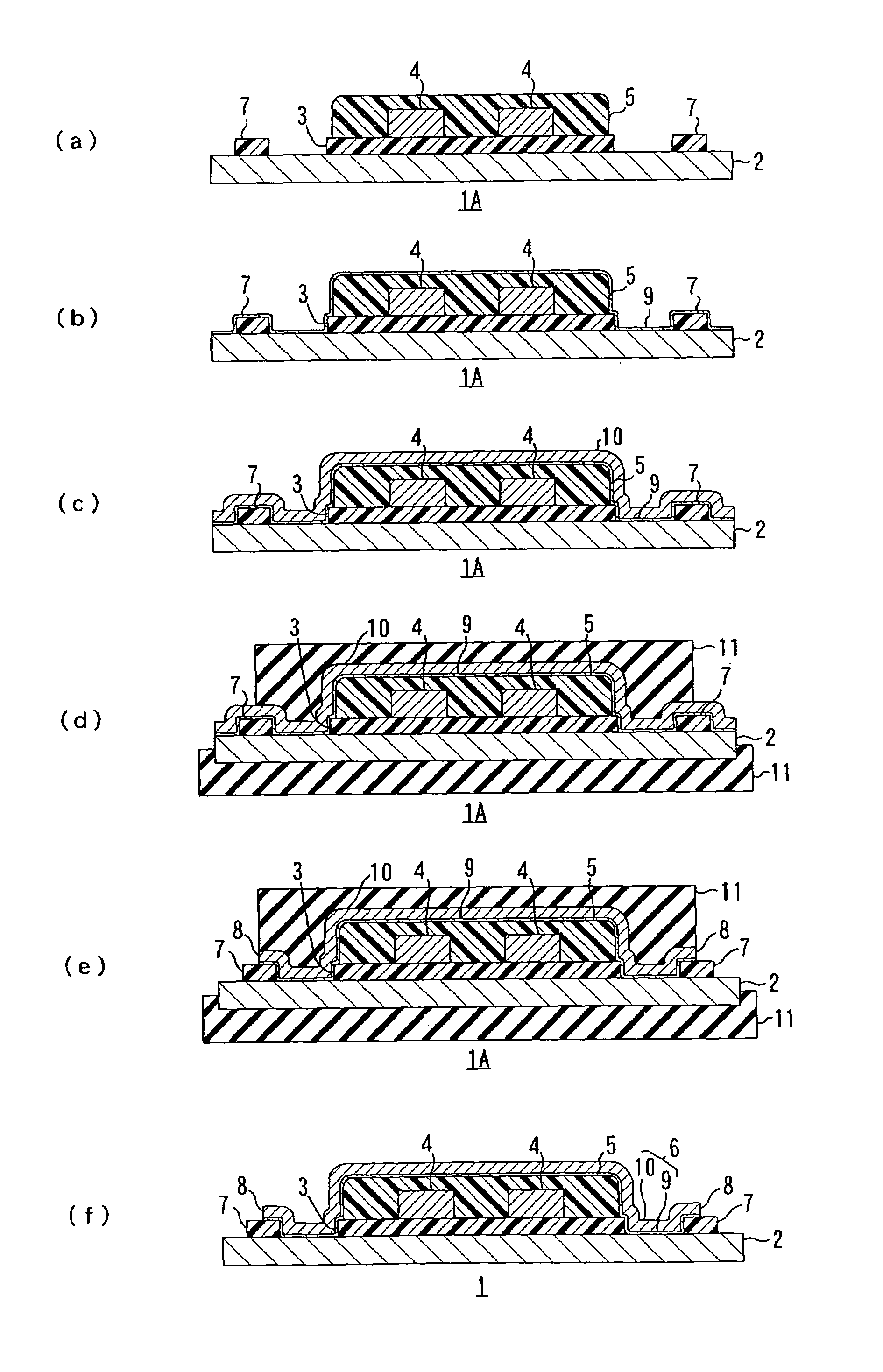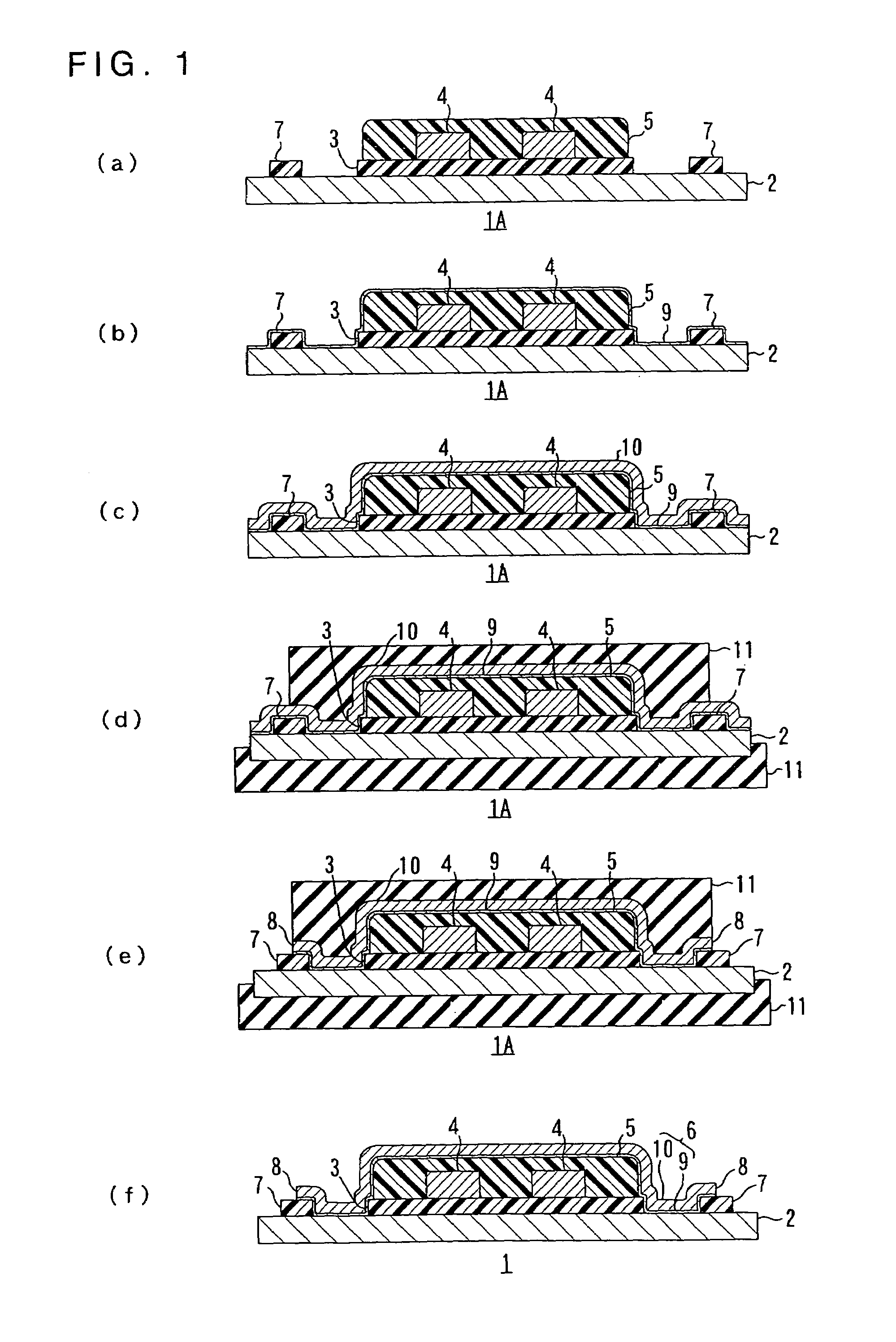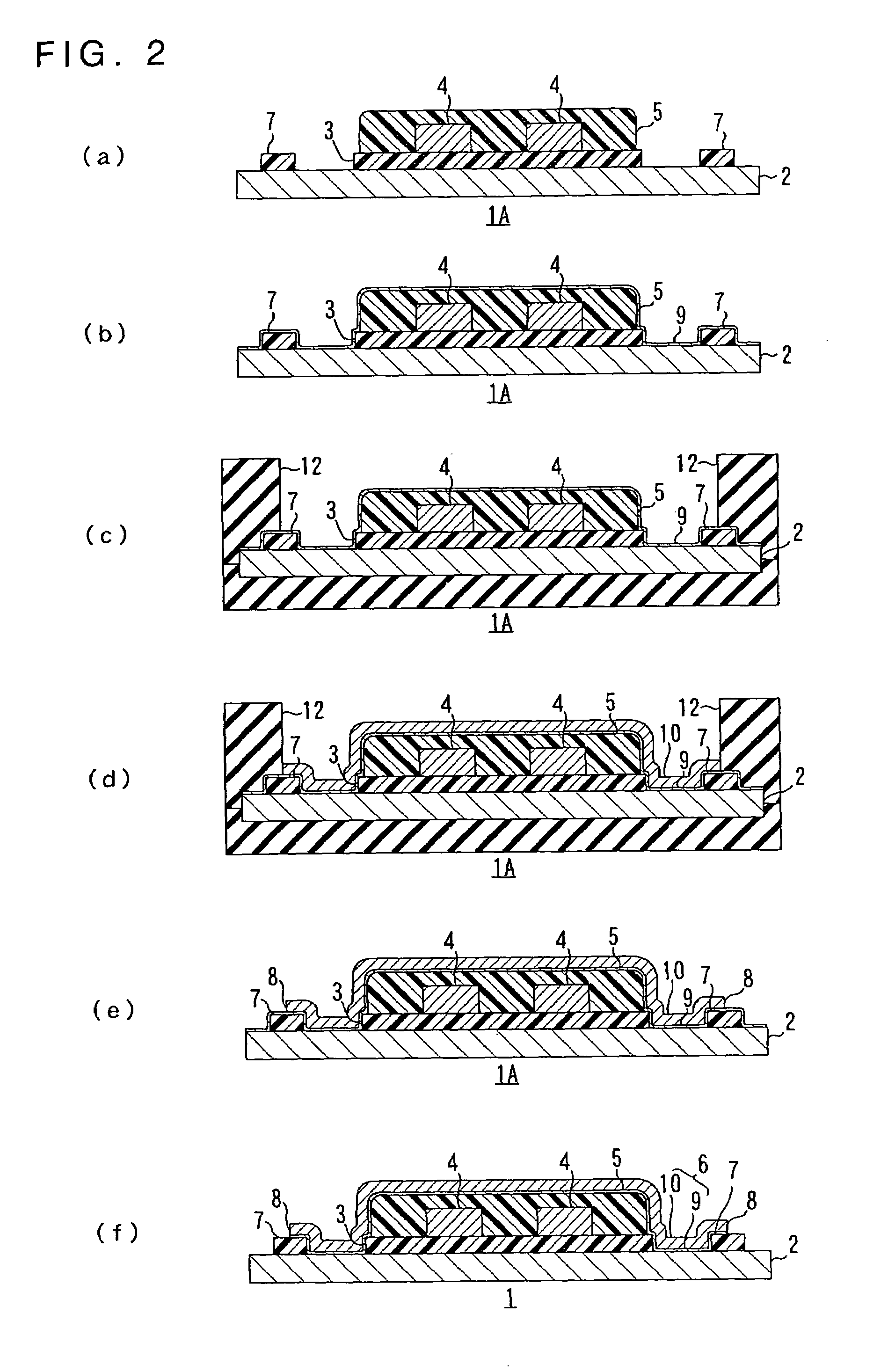Wired circuit board
a wired circuit board and wire technology, applied in the field of wired circuit boards, can solve the problems of increasing noise on the signal, increasing the requirement of flexible wired circuit boards with metal substrates, and increasing the influence of noise on signals, so as to improve the reliability of electrical connections, reduce noise, and ensure the effect of connection reliability
- Summary
- Abstract
- Description
- Claims
- Application Information
AI Technical Summary
Benefits of technology
Problems solved by technology
Method used
Image
Examples
example 1
[0105]Solution of polyamic acid resin was applied to a surface of a metal substrate of stainless foil having thickness of 20 μm and then was exposed to light and developed. Thereafter, it is cured, whereby an insulating base layer of polyimide resin having thickness of 14 μm and two resin layers of polyimide resin having thickness of 14 μm and width of 0.1 mm and spaced 0.1 mm from both widthwise sides of the insulating base layer were formed in the form of a predetermined pattern.
[0106]Then, a conductor layer was formed by a semi-additive process. Specifically, a thin metal film comprising a thin chromium film having thickness of 300 Å and a thin copper film having thickness of 700 Å were formed by sputtering. Then, an electrolytic copper-plated layer having thickness of 10 μm was formed on the thin metal film thus formed. Then, the electrolytic copper-plated layer was covered with an electroless nickel-plated layer having thickness of 0.1 μm by electroless nickel plating.
[0107]The...
example 2
[0111]The wired circuit board before the shield layer being formed was produced in the same manner as in Example 1 (Cf. FIG. 2(a)).
[0112]Then, a thin metal film comprising a thin chromium film having thickness of 300 Å and a thin copper film having thickness of 700 Å was formed on the entire area of the metal substrate including the insulating cover layer and the resin layers by sputtering (Cf. FIG. 2(b)).
[0113]Thereafter, a plating resist of dry film resist was formed on a portion of the thin conductor film corresponding to a reversed portion of the shield layer forming portion (Cf. FIG. 2(c)). Then, an electrolytic plated layer comprising an electrolytic nickel-plated layer having thickness of 1 μm and an electrolytic gold-plated layer having thickness of 1 μm was formed by electrolytic nickel plating and electrolytic gold plating on the thin conductor film exposed from the plating resist (Cf. FIG. 2(d)). Thereafter, the plating resist was removed by chemical etching (Cf. FIG. 2(e...
example 3
[0114]The wired circuit board before the shield layer being formed was produced in the same manner as in Example 1 (Cf. FIG. 3(a)).
[0115]Then, a thin metal film comprising a thin chromium film having thickness of 300 Å and a thin copper film having thickness of 700 Å was formed on the entire area of the metal substrate including the insulating cover layer and the resin layers by sputtering (Cf. FIG. 3(b)).
[0116]Then, an etching resist of dry film resist was formed on a shield layer forming portion of the thin conductor film (FIG. FIG. 3(c)). Then, the thin conductor film exposed from the etching resist was removed by chemical etching (Cf. FIG. 3(d)).
[0117]Thereafter, the etching resist was removed by chemical etching (FIG. 4(e)). Then, a plating resist of dry film resist was formed on a portion of the metal substrate corresponding to a reversed portion of the shield layer forming portion thereof (FIG. 4(f)).
[0118]Then, an electrolytic plated layer comprising an electrolytic nickel-p...
PUM
 Login to View More
Login to View More Abstract
Description
Claims
Application Information
 Login to View More
Login to View More - R&D
- Intellectual Property
- Life Sciences
- Materials
- Tech Scout
- Unparalleled Data Quality
- Higher Quality Content
- 60% Fewer Hallucinations
Browse by: Latest US Patents, China's latest patents, Technical Efficacy Thesaurus, Application Domain, Technology Topic, Popular Technical Reports.
© 2025 PatSnap. All rights reserved.Legal|Privacy policy|Modern Slavery Act Transparency Statement|Sitemap|About US| Contact US: help@patsnap.com



